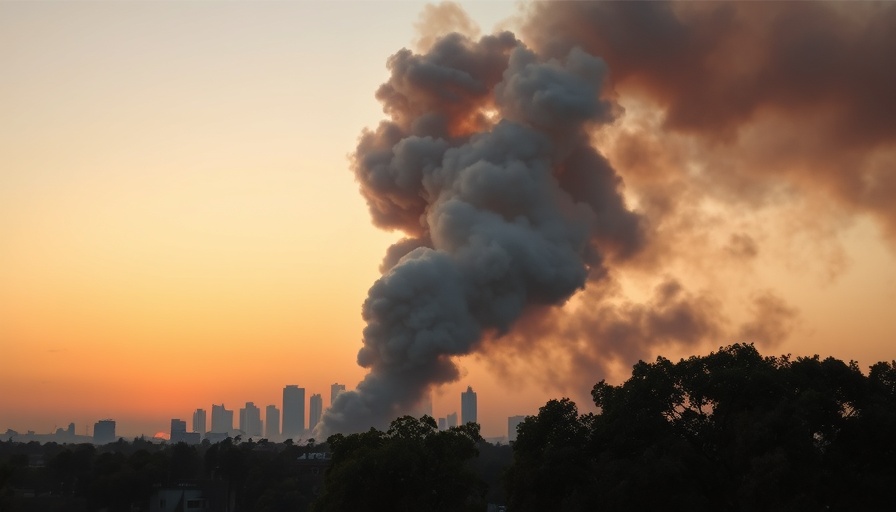
Breaking News: U.S. Strikes Iranian Nuclear Facilities
In a stunning turn of events, President Donald Trump has announced that U.S. bombers have targeted three critical nuclear sites in Iran, marking a significant escalation in U.S. military involvement in the region. The attacks specifically aimed at the Fordo, Natanz, and Isfahan facilities were characterized by Trump as a decisive step to neutralize the perceived threat of Iran's nuclear program.
The Politics of Military Action
This military action comes amid a backdrop of worsening relations between the U.S. and Iran, exacerbated by Israel’s recent operations against Iranian interests. Israeli Prime Minister Benjamin Netanyahu has been vocal about targeting what he describes as existential threats posed by Iran. His aggressive rhetoric is compounded by tangible military actions, such as missile strikes inside Iran and significant military posturing in neighboring regions.
History of Diplomacy versus Military Action
In analyzing the root causes of this conflict, one must consider the historical context. The 2015 nuclear agreement (JCPOA) served as a framework that effectively curbed Iran's nuclear aspirations through diplomatic engagement and regular inspections. At that time, five world powers, including the U.S., had come together to foster stability. However, Trump's withdrawal from this key agreement in 2018 indicates a preference for military intervention over diplomacy.
Reactions on the Global Stage
The immediate global reaction to these strikes is likely to be multifaceted. While some world leaders may support the U.S. stance against Iran, others are critically viewing this escalation as a reckless move that could destabilize an already volatile region. With Iranian missile systems potentially aimed at U.S. personnel stationed in Bahrain and other Gulf states, the stakes are rising dangerously high.
Future Implications: What Lies Ahead?
The potential ramifications of these military strikes extend far beyond the immediate tactical successes. Analysts warn that these actions may provoke retaliatory measures from Iran, which has consistently maintained a combative posture towards U.S. interests. Moreover, there is a growing concern that continued military engagement could entrench the U.S. in another prolonged conflict in the Middle East.
An Opportunity for Dialogue?
Despite the tumultuous circumstances, there remains a glimmer of hope for a return to dialogue. Offers from Russia to secure Iran’s uranium supplies and calls from European nations for the U.S. to reassess its strategy may pave a path towards renewed diplomatic efforts. It's crucial to recognize that military might is not the sole avenue to attain security; diplomatic channels must be explored to prevent ever-escalating hostilities.
Lessons from the Past
Looking back, previous engagements in the region highlight the dire consequences of neglecting diplomacy. Iraq's invasion in 2003 serves as a cautionary tale of how expansive military operations can spiral into existential crises long after the initial goals have faded. Lessons must be learned to avoid repeating the mistakes of the past.
Conclusion: Why the Stakes Are High
The recent military actions taken by the U.S. against Iran's nuclear facilities raise several pressing questions about the future of peace and stability in the Middle East. Given the interconnectedness of global politics today, the impact of these decisions could resonate worldwide.
As we move forward, it is imperative to consider not just the immediate tactical benefits of military strikes, but the long-term effects of abandoning diplomatic avenues. The world watches closely as these developments unfold, and the call for careful deliberation has never been more urgent.
 Add Row
Add Row  Add
Add 




Write A Comment